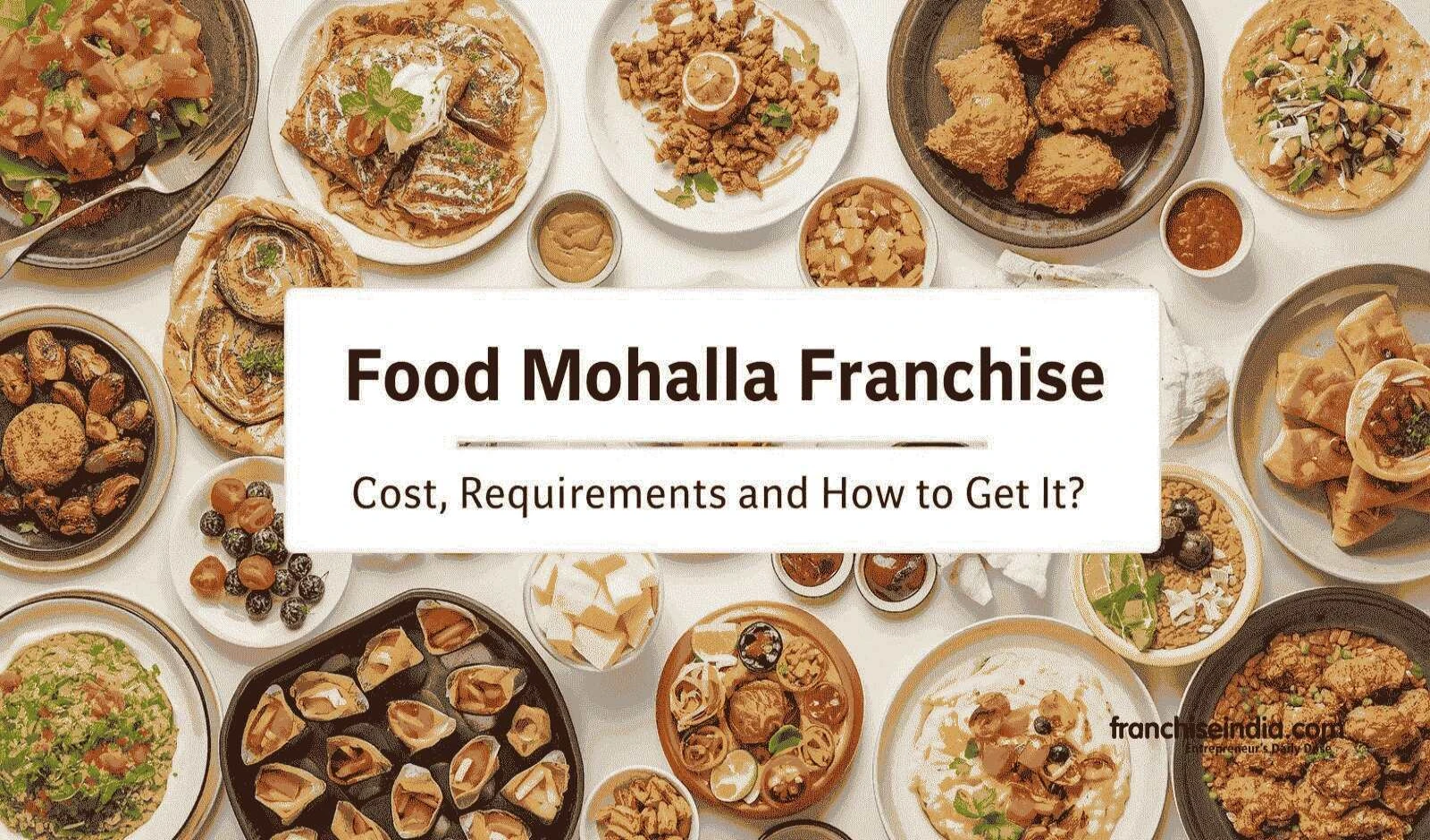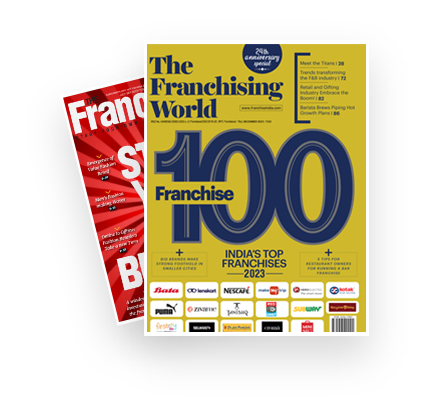
The Indian food service sector is changing quickly, moving beyond single-product QSRs toward multi-cuisine, casual dining concepts that provide variety and affordability. By providing a varied menu that caters to families, parties, and a range of palates, Food Mohalla takes advantage of this trend and maximises foot traffic and average transaction value.
Investing in a Food Mohalla franchise is a strategic move, offering a proven business model that mitigates the high risks associated with independent restaurant startups. You gain immediate access to a tested menu, standardised processes, and established brand loyalty, significantly accelerating your path to profitability.
This comprehensive guide consists of everything that you should know before investing in a franchise, including the estimated financial investment, the core requirements for eligibility, and the step-by-step process for acquiring and successfully launching a Food Mohalla franchise unit.
Also read: 5 Biggest Mistakes First-Time Franchise Investors Make
The Food Mohalla Advantage: High-Value, High-Traffic Model
.png)
Food Mohalla’s appeal lies in its ability to offer a wide range of popular dishes, including Chinese and Continental favourites as well as Indian street cuisine and fast-food mainstays. This model provides superior Return on Investment (ROI) for several reasons:
1. Broad Customer Appeal and High Footfall
Unlike specialized franchises (e.g., specific dessert or coffee shops), a multi-cuisine setup ensures that Food Mohalla attracts customers throughout the day for breakfast, lunch, snacks, and dinner. Higher daily sales volume and increased resistance to market fluctuations are the immediate results of this.
2. Streamlined Supply Chain for Variety
Successful multi-cuisine franchises employ a core set of standardised raw ingredients that can be mixed and prepared in many ways, such as standardised dairy, fresh vegetables, and common base sauces, while yet providing variation. The franchisor’s supply chain is designed to optimize bulk buying efficiency across the broad menu.
3. Maximum Utilization of Space
The casual dining format encourages longer dwell times and increased group spending. The franchisee maximises income per square foot by making the kitchen arrangement and seating; the franchisee increases income per square foot, which is critical in high-rent areas.
Also read: Chaayos franchise: Cost, benefits and requirements
The Real Cost of a Food Mohalla Franchise
The investment isn't just one number you write on a cheque. It's a bunch of pieces that add up. Let's break it down in a way that makes sense.
I like to think of the costs in two big buckets: the one-time "get the doors open" costs and the ongoing "keep the lights on" costs.
Your Initial Investment
This is the cash you need to get from an empty space to a grand opening.
1. The Franchise Fee: Your Golden Ticket
This is a one-time fee you pay to the company for the right to use their name, their recipes, and their system. For a popular brand like Food Mohalla, you're looking at somewhere in the ballpark of ₹5 lakh to ₹15 lakh. This can change based on your city and whether you're opening a big outlet or a small kiosk.
What are you really paying for here? You're paying for their brand's reputation, their training programme, and all the work they've already done to figure out what works.
2. The Kitchen and The Look: The Big Expense
This is usually the heaviest part. You'll need commercial-grade equipment—tandoors, grills, fridges, exhaust systems—the works. Then, the interior has to match the brand's specific, vibrant look. Be ready for this to cost between ₹15 lakh to ₹30 lakh, it adds up fast.
3. The Space: Security Deposit and Rent Advance
You can't operate without a location. Landlords will typically ask for a security deposit (often 2-3 months' rent) plus an advance (1-2 months). If your rent is, say, ₹50,000 a month, you might need to pay ₹1.5 to ₹2.5 lakh upfront just to secure the place.
4. Licenses and Paperwork
The not-so-fun part. You'll need an FSSAI license, GST registration, a trade License, and a few others. It’s a maze. Budget around ₹50,000 to ₹1 lakh to get through all the red tape, maybe with a little professional help.
5. Stocking Up and Spreading the Word
You'll need initial funds to buy your first batch of ingredients and to run a good opening promotion to let the neighbourhood know you're here. Set aside another ₹1-2 lakh for this.
So, adding it all up, your total one-time investment could be anywhere from ₹25 lakh to ₹50 lakh.
I know, it's a wide range. A smaller kiosk in a Tier 2 city will be on the lower end, while a prime location in a metro will be at the top.
Cost Breakdown:
Once you're open, the bills keep coming. You've got to sell enough to cover these every single month.
Royalty Fee: This is your ongoing fee to the parent company. It's usually a cut of your monthly sales, typically 5% to 8%. This pays for their continued support and brand development.
Marketing Fee: There's often a smaller fee (1-2%) for a collective marketing fund.
Rent: This is a big one. It could be ₹30,000 in a smaller city or over ₹1 lakh for a prime spot.
Your Team: You'll need cooks, cashiers, and cleaners. For a small place, maybe 4-5 people. For a bigger one, 8-12. Budget at least ₹80,000 to ₹2 lakh per month for salaries.
Food Supplies: This is your cost of the actual food you're selling, usually around 30-40% of your sales price.
Utilities: Electricity, water, gas- another ₹20,000 to ₹50,000 a month, easily.
Also read: Tea post franchise: Cost and how to get?
What Are They Looking For in an Owner?: The Requirements

Okay, so you might have the money. But the company is going to want to know more about you. It's a partnership for them, too. They need to trust you with their brand.
1. The Financial Investment
They don't just want to see the investment money. They want to know you're financially stable. They'll likely ask for:
Proof of Net Worth: This shows your overall financial strength. They might be looking for a total net worth of ₹50 lakh to ₹1 crore.
Liquid Cash: They need to know you have enough ready cash to handle the initial setup and the first few months of operation without immediately going into panic mode.
2. Location
They are going to be super picky about your location. As your success depends on it.
Size: A kiosk might need 150-300 sq. ft. A proper QSR could need 500-1200 sq. ft.
Foot Traffic: It has to be a place with a lot of natural walk-by traffic- a mall, a popular market street, or a commercial area.
Infrastructure: The space must be able to get all the necessary licences and have proper drainage, water, and power.
How Do I Actually Make This Happen?
You've got the funds, you think you fit the bill, and you're excited. What's the actual process? Let's walk through it, step by step.
Stage 1: Initial Inquiry and Prequalification
Go to the official Food Mohalla website. Read every single page. Reach out through the official "Franchise With Us" form on their website. Fill it out properly and honestly. This is your first impression, so make it count. If they like what they see, you'll get a call or a meeting with their franchise team. This is a get-to-know-you session. They'll ask about your personal details, like your financial background, your interests, and your city.
Stage 2: Due Diligence and Business Plan Submission
This is the most important step. They'll give you a long, detailed document called the Franchise Disclosure Document (FDD). It has everything. Please, please, get a lawyer who knows franchises to look this over with you. Don't sign anything you don't 100% understand.
Now that you know the full cost, finalize your finances. How much of your own money are you putting in? Will you need a loan? Start talking to banks to see what you can get pre-approved for.
Stage 3: Legal Formalization and Site Approval
You and the company will work together (and they'll have the final say) to find a location that meets both your budget and their strict criteria for success.
After your location is finalized, you will sign the official franchise agreement and will pay the initial franchise fees.
Stage 4: Execution, Training, and Launch
After everything is done, you and your staff will undergo the intensive training. They will cover everything, including the recipes, the operations, and the tech systems.
Your store is ready; your team is trained. The company will often help you plan a launch event to create a buzz. And just like that, you're open for business.
Also read: 7 Best Tea Franchise Opportunities in India
What’s next?
If you're someone with a genuine passion for food, solid management skills, and the financial backbone, a Food Mohalla franchise can be an incredible journey. It’s a chance to be your own boss with a safety net.
But go in with your eyes open. Do your research, talk to other franchisees, and be brutally honest with yourself about the commitment. If it all lines up, you could be the one serving up the next favourite dish in your very own food mohalla.
You might also like: House of Candy franchise: Cost and how to get?

